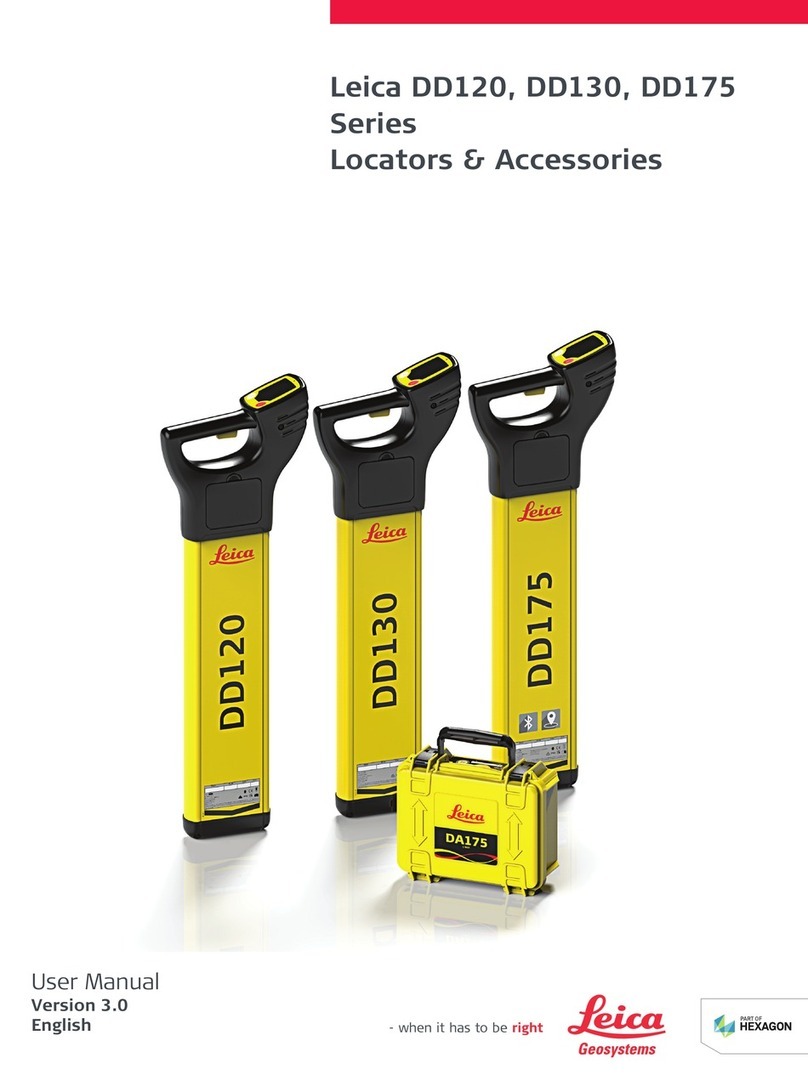
Ultra, Safety Directions 9
1.2 Intended Use
Permitted use The products are intended to be used for the following applications:
• Detection and localization of underground services: cables and metallic pipes.
• Locator: Detection and localisation of utilities with the use of approved accessories.
• Locator: Estimation of the depth of an underground service, or accessory
• Locator with Bluetooth: Data communication with external appliances.
Adverse use • Use of the product without instruction.
• Use outside of the intended use and limits.
• Disabling safety systems.
• Removal of hazard notices.
• Opening the product using tools, for example screwdriver, unless this is specifically
permitted for certain functions.
• Modification or conversion of the product.
• Use after misappropriation.
• Use of products with recognizable damages or defects.
• Use with accessories from other manufacturers without the prior explicit approval of
Leica Geosystems.
• Inadequate safeguards at the surveying site.
Danger Adverse use can lead to injury, malfunction and damage. It is the task of the person respon-
sible for the equipment to inform the user about hazards and how to counteract them. The
product is not to be operated until the user has been instructed on how to work with it.































